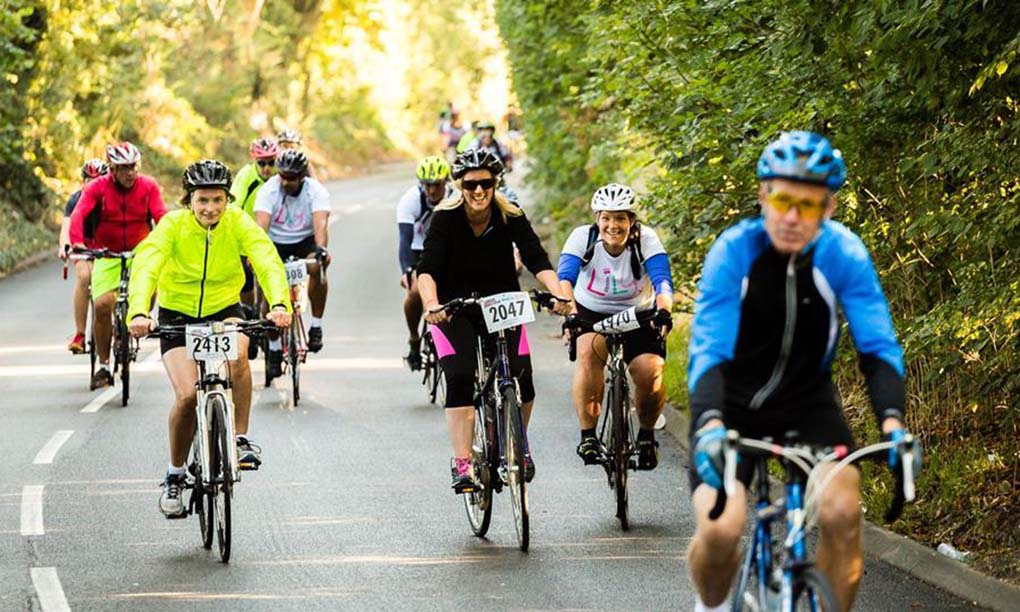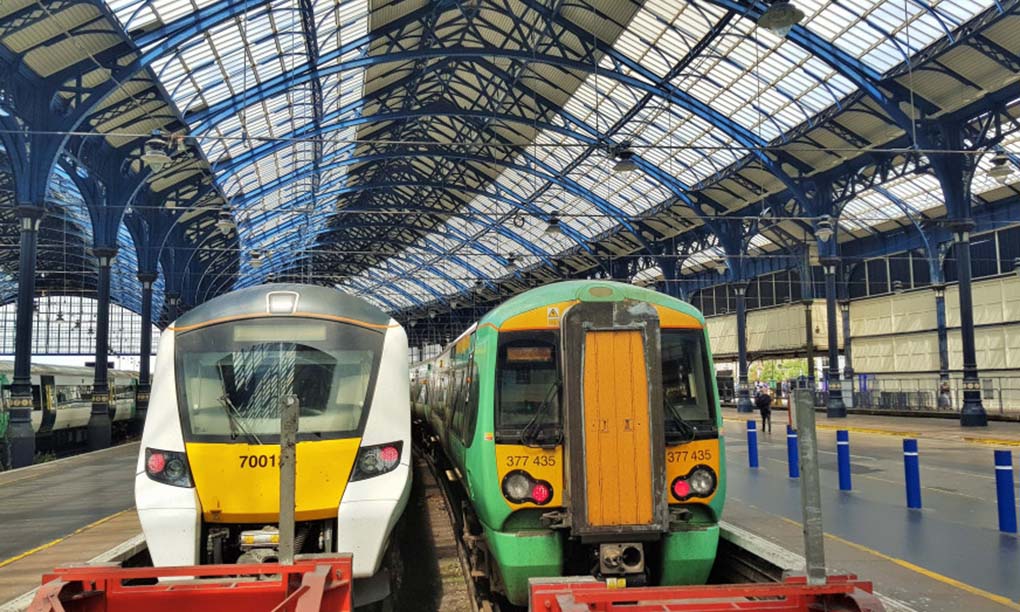Brighton is one of the UK’s most charming seaside cities, offering stunning views of the coast, a vibrant cultural scene, and plenty of historical attractions. Whether you’re visiting for the weekend or staying longer, getting around Brighton is a breeze. With its compact size, excellent public transport options, and pedestrian-friendly streets, you can explore the city without much hassle. In this guide, I’ll share my personal experiences and offer tips on how to navigate Brighton like a local. From buses and taxis to cycling and walking, this article covers all you need to know about getting around Brighton.
1. Walking: The Best Way to Explore Brighton
Why walk in Brighton?
Brighton’s compact nature makes it a very walkable city, and in my opinion, walking is the best way to get a real feel for its character. Strolling through the Lanes, exploring the narrow streets, or walking along the seafront provides a rich sensory experience. You can stop by independent boutiques, explore hidden cafes, and take in the fresh sea breeze as you walk along Brighton’s famous pebble beach.
Most of Brighton’s key attractions are within walking distance of each other. The Brighton Palace Pier, the Royal Pavilion, and the British Airways i360 are all just a short walk apart. If you’re staying near the city center or the seafront, you can easily explore most places without needing public transport.
Walking routes to consider:
- The Seafront Walk: Start from the Brighton Marina and walk west along the coast, passing Brighton Palace Pier, and finish your stroll at Hove. This route gives you gorgeous views of the English Channel and iconic sights like the West Pier ruins.
- The Lanes and North Laine: Take a leisurely stroll through the Lanes to discover quaint shops and independent cafes, and explore the North Laine area for quirky markets and street art.
Tips:
- Make sure to wear comfortable shoes, especially if you plan on walking for extended periods.
- Brighton is known for unpredictable weather, so carry a light raincoat or umbrella.
2. Buses: Convenient and Affordable
Brighton has a fantastic bus network operated primarily by Brighton & Hove Buses, which covers not just the city but also the surrounding areas, including trips out to the nearby South Downs National Park.
Why take the bus?
Brighton’s buses are frequent, reliable, and a great option for reaching destinations that are further away from the city center. If you’re staying outside of central Brighton or planning a day trip to nearby attractions like Devil’s Dyke or Rottingdean, the bus will get you there easily.
Key routes:
- Route 7: This is one of the most popular routes and runs from Brighton Marina to the city center and on to Brighton Station.
- Route 12X: For those looking to explore the coastline, this bus goes along the coast to Eastbourne, offering stunning views along the way.
- Route 77: If you’re in the mood for a hike or a day outdoors, this bus will take you to Devil’s Dyke, a stunning valley in the South Downs.
How to pay:
- You can pay for bus tickets using contactless payment methods, or you can buy tickets via the Brighton & Hove Bus app, which is very convenient and often offers discounted fares. A single journey usually costs around £2.70, and there are also day tickets for unlimited travel starting at £5.20.
Tips:
- Download the Brighton & Hove Bus app to check live bus times and routes. It’s a lifesaver when planning your day.
- If you plan on taking multiple trips in a day, the CitySAVER ticket offers unlimited bus travel for the day at a reduced price.
3. Cycling: Eco-Friendly and Fun
Brighton is an increasingly bike-friendly city, with a growing network of dedicated cycle lanes and paths. If you want to explore Brighton’s coastline or even venture out into the countryside, cycling is a great option.

Why cycle in Brighton?
Brighton’s relatively flat terrain along the seafront makes cycling easy and enjoyable. You can rent bikes or electric bikes from various shops around the city or through Brighton’s bike-sharing scheme, BTN BikeShare. Cycling gives you the freedom to cover more ground than walking, and it’s also eco-friendly.
Where to cycle:
- Seafront Cycle Route: The most popular cycling route is along the seafront, starting from Brighton Marina and heading west all the way to Hove. The path is well-paved and offers stunning views of the sea.
- Preston Park to Devil’s Dyke: For the more adventurous, you can ride through the city to Preston Park and continue onto Devil’s Dyke, where you’ll be rewarded with incredible countryside views.
Renting a bike:
BTN BikeShare offers a simple and affordable way to rent bikes across the city. You can pick up and drop off bikes at various docking stations. Download the app, sign up, and unlock a bike for just £1, with additional charges based on the length of your ride. Daily rentals from local bike shops are also available, starting at around £12.
Tips:
- Brighton is hilly in some areas, so an electric bike can make your ride a lot easier.
- Always wear a helmet, especially when cycling in busy areas or on roads with traffic.
4. Taxis and Ridesharing: Quick and Easy
If you’re short on time or have heavy luggage, taxis or rideshare services like Uber can be a convenient option for getting around Brighton.
Why use a taxi or Uber?
Taxis and rideshares offer the fastest and most direct route to your destination, especially if you’re traveling late at night when public transport may be less frequent. I used Uber a couple of times during my stay, and it was very reliable and fairly priced for short trips within the city.
Taxi options:
- You can easily hail one of Brighton’s black cabs on the street or book in advance by calling a local taxi service. Most taxis are equipped with card machines, so you don’t need to worry about having cash on hand.
- Uber operates in Brighton, and I found it to be a convenient way to get around the city, particularly when traveling with friends or during rainy weather.
Tips:
- For a short trip within the city center, expect to pay around £6–£10 for a taxi or Uber ride.
- During peak tourist season, taxis can be in high demand, so it’s best to book in advance if possible.
5. Brighton’s Trains: Quick Trips to Nearby Destinations
If you’re planning to explore nearby towns or cities like London, Lewes, or Eastbourne, Brighton’s train services are an excellent option. The main station, Brighton Station, is centrally located and well-connected to the UK rail network.

Why take the train?
Trains are the fastest way to get to and from Brighton, particularly if you’re arriving from London or taking a day trip to one of the neighboring towns. During my visit, I used the train several times for quick trips to nearby destinations like Lewes, and it was fast, comfortable, and affordable.
Popular routes:
- Brighton to London Victoria: The train to London takes just under an hour, making it a great option for day trips. Trains run frequently, and you can usually find tickets for around £10–£20 if booked in advance.
- Brighton to Lewes: This short train ride takes just 15 minutes, offering easy access to the charming market town of Lewes, known for its historic castle and beautiful countryside.
- Brighton to Eastbourne: The coastal town of Eastbourne is only a 30-minute train ride away, perfect for a day out by the sea.
Tips:
- Book your tickets in advance online to save money, especially for longer trips.
- Off-peak tickets are usually cheaper, so try to avoid traveling during rush hour.
6. Renting a Car: Explore Beyond Brighton
If you plan on exploring Brighton’s surroundings or the scenic South Downs, renting a car can give you the flexibility to venture further afield. There are several car rental companies in Brighton, and the process is quite simple.
Why rent a car?
Renting a car allows you to explore Brighton’s countryside, coastal towns, and hidden gems that aren’t as easily accessible by public transport. A day trip to the Seven Sisters Cliffs or a scenic drive through the South Downs National Park is much more enjoyable by car.
Where to rent a car:
Car rental companies like Hertz, Avis, and Enterprise have offices in Brighton, offering a wide selection of vehicles at reasonable prices. Renting a car for the day typically costs around £30–£50, depending on the type of vehicle and the season.
Tips:
- Make sure to reserve your car in advance, particularly during the busy summer months.
- Parking can be tricky in central Brighton, so look for accommodations that offer parking or use one of the city’s many paid car parks.
Brighton’s range of transportation options makes it easy to get around, no matter your budget or preferences. From walking and cycling to taking the bus or train, you can explore the city’s many attractions at your own pace.
Tags: How to Get Around Brighton, Transportation in Brighton